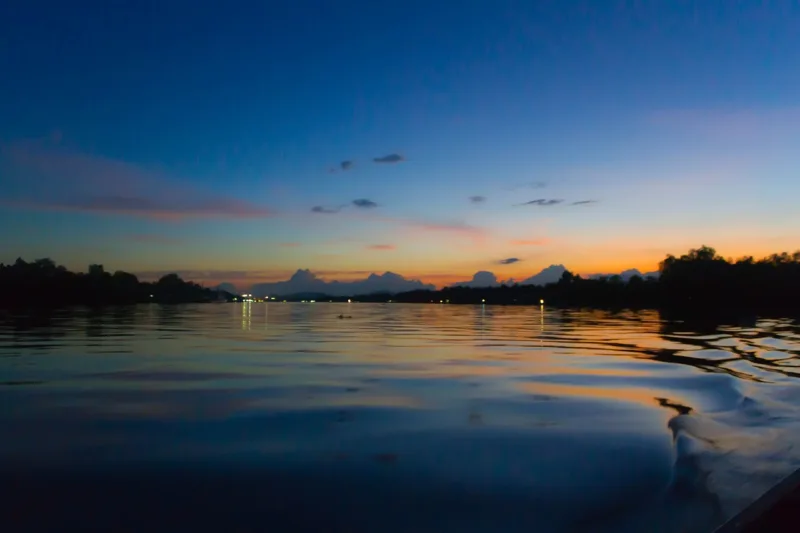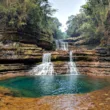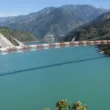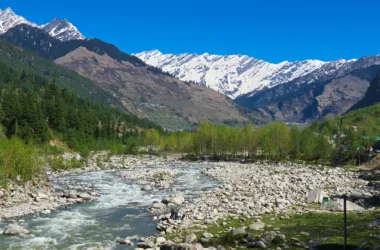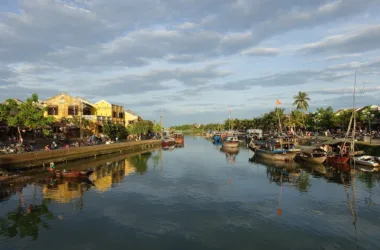Nestled in the heart of India, the Tapi River stands as a testament to the nation’s diverse and enchanting landscape. This majestic river, often overshadowed by its more celebrated counterparts, possesses a wealth of natural beauty, historical significance, and ecological importance that deserves a spotlight.
Discovering the Geography: Tapi’s Tranquil Journey
The Source and Course
Originating in the Satpura Range, the Tapi River embarks on a meandering journey through the states of Madhya Pradesh, Maharashtra, and Gujarat. Its serene flow spans approximately 724 kilometers, making it one of the essential water bodies in central India.
Ecological Importance
The Tapi River serves as a lifeline for the surrounding ecosystems, sustaining a diverse array of flora and fauna. The riparian zones along its banks are crucial habitats for various species, contributing to the overall biodiversity of the region.
Historical Significance: Tales Along the Tapi
Cultural Heritage
As the Tapi winds its way through the heartland of India, it weaves a tapestry of cultural richness. Numerous ancient settlements and historical sites dot its banks, offering a glimpse into the vibrant past of the region. From ancient temples to archaeological wonders, the Tapi River basin holds treasures waiting to be explored.
Economic Impact
Beyond its cultural importance, the Tapi River has played a pivotal role in shaping the economic landscape of the regions it traverses. The fertile plains along its course have supported agriculture for centuries, fostering sustainable livelihoods for local communities.
Challenges and Conservation Efforts: Nurturing the Tapi
Environmental Concerns
In recent times, the Tapi River has faced environmental challenges, including pollution and habitat degradation. Urbanization and industrialization along its banks have raised concerns about water quality and ecosystem health.
Conservation Initiatives
Recognizing the importance of preserving this natural gem, various governmental and non-governmental organizations have initiated conservation efforts. Reforestation projects, water quality monitoring, and community awareness programs aim to safeguard the Tapi River for generations to come.
Recreation and Tourism: Tapi’s Untapped Potential
Scenic Beauty
While the Tapi River has been a lifeline for communities and a haven for biodiversity, its scenic beauty remains relatively undiscovered. Picturesque landscapes, riverfronts, and serene boat rides await those who seek to explore the hidden gems along its course.
Tourism Opportunities
As we delve into the potential of the Tapi River, there lies an opportunity to promote sustainable tourism. From adventure enthusiasts seeking river rafting to nature lovers exploring the riverbanks, the Tapi has the potential to become a sought-after destination.
Conclusion: Embracing the Tapi’s Future
In conclusion, the Tapi River is not just a geographical entity but a cultural, historical, and ecological treasure trove waiting to be unveiled. By recognizing its significance, addressing environmental challenges, and promoting sustainable tourism, we can ensure that the Tapi River continues to thrive for generations, leaving an indelible mark on India’s landscape.
Similar Articles
Frequently Asked Questions About the Tapi River
1. What is the Tapi River?
The Tapi River is significant in central India, originating in the Satpura Range and flowing through the states of Madhya Pradesh, Maharashtra, and Gujarat. It spans approximately 724 kilometers, making it a notable water body in the region.
2. What is the Ecological Importance of the Tapi River?
The Tapi River plays a crucial role in sustaining local ecosystems. The riparian zones along its banks provide habitats for diverse flora and fauna, contributing to the overall biodiversity of the region.
3. What is the Historical Significance of the Tapi River?
The Tapi River has a rich historical heritage, with ancient settlements and historical sites lining its banks. These sites offer insights into the cultural and historical tapestry of the regions it traverses.
4. How Does the Tapi River Impact the Economy?
The fertile plains along the Tapi River support agriculture, shaping the economic landscape of the areas it flows through. The river has been a source of sustenance for local communities for centuries.
5. What Environmental Challenges Does the Tapi River Face?
In recent times, the Tapi River has faced environmental challenges, including pollution and habitat degradation. Urbanization and industrialization along its banks have raised concerns about water quality and ecosystem health.
6. Are There Conservation Efforts in Place for the Tapi River?
Yes, various governmental and non-governmental organizations have initiated conservation efforts for the Tapi River. These include reforestation projects, water quality monitoring, and community awareness programs to ensure the river’s long-term health.
7. What Tourism Opportunities Does the Tapi River Offer?
The Tapi River boasts scenic beauty that is relatively undiscovered. From picturesque landscapes to serene boat rides, there are ample opportunities for sustainable tourism along its course, catering to adventure enthusiasts and nature lovers alike.
8. How Can One Explore the Tapi River?
Exploring the Tapi River can be done through guided riverfront tours, boat rides, and visits to historical sites along its banks. Local tourism initiatives aim to showcase the river’s hidden gems while promoting responsible and sustainable travel.
9. Is the Tapi River Open for Adventure Activities?
Yes, the Tapi River presents opportunities for adventure activities such as river rafting. Adventure enthusiasts can experience the thrill of navigating its waters while enjoying the natural beauty that surrounds the river.
10. How Can I Contribute to Tapi River Conservation?
Individuals can contribute to Tapi River conservation by participating in local clean-up initiatives, supporting environmental awareness programs, and practicing responsible tourism. Additionally, staying informed about the river’s challenges and spreading awareness can foster a collective effort to protect this natural treasure.




